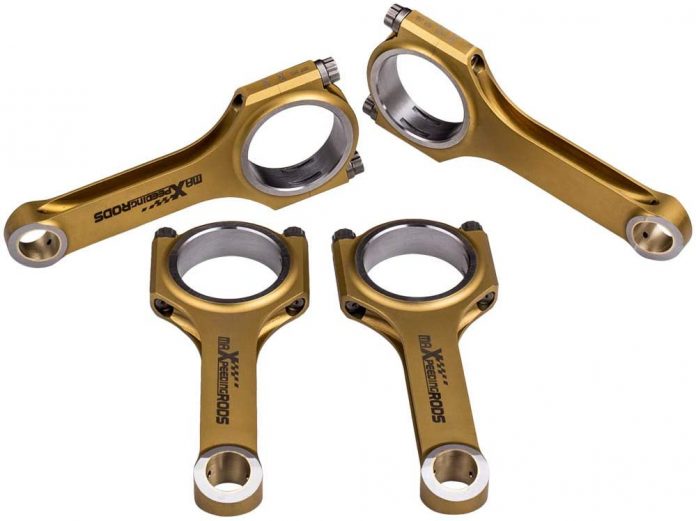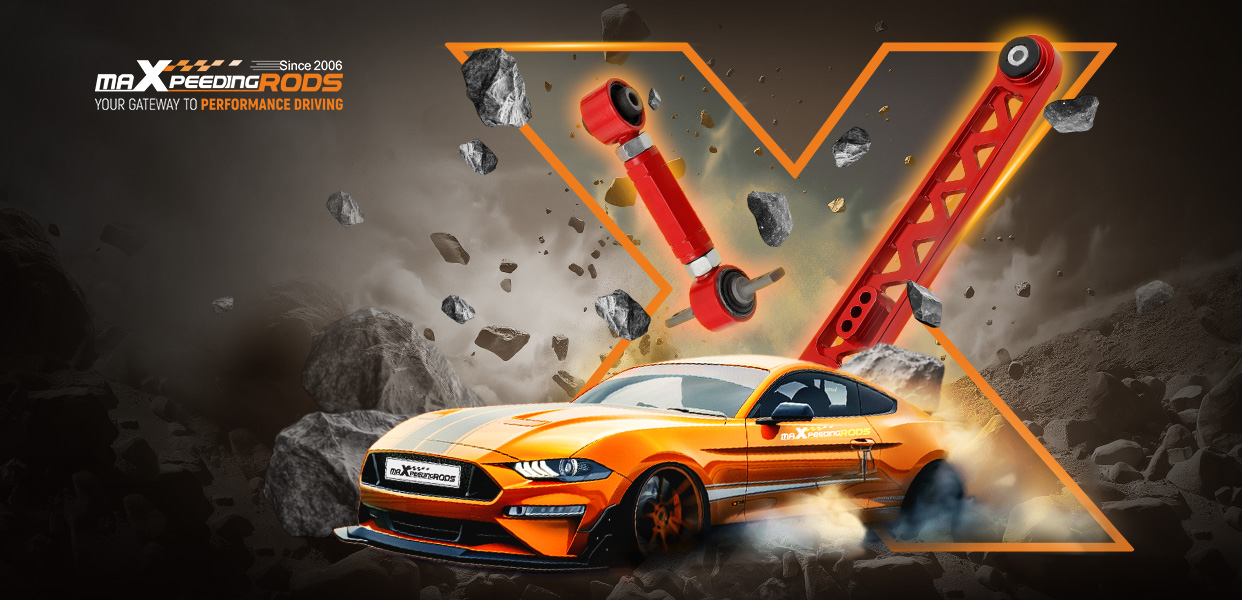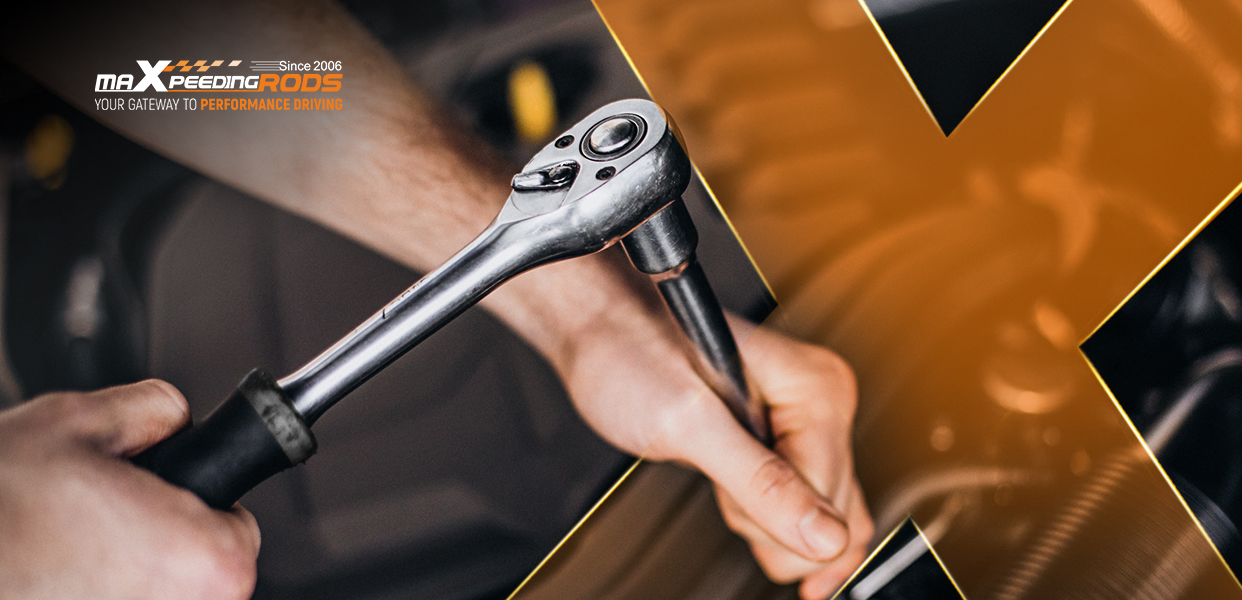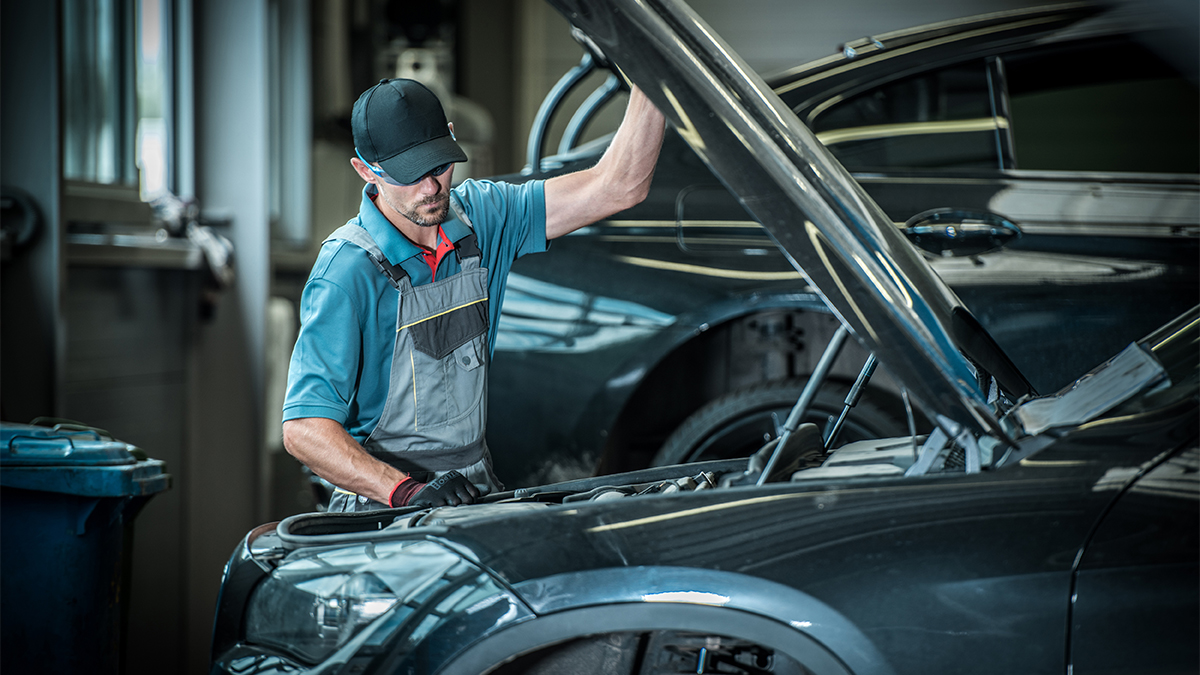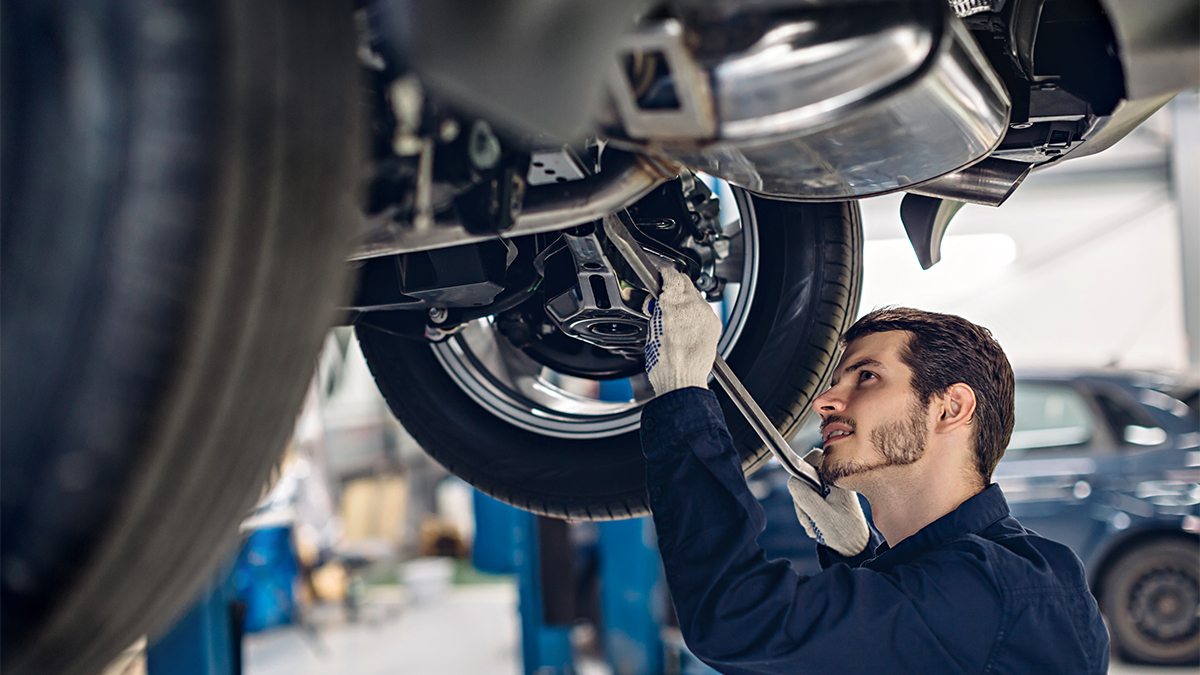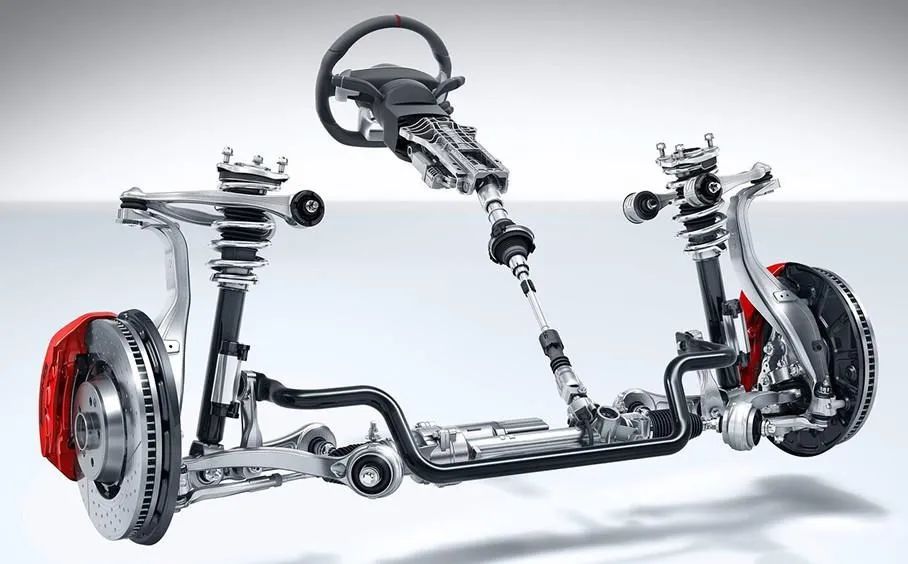WHAT IS A CONNECTING ROD?
A connecting rod is an engine component that transfers motion from the piston to the crankshaft and functions as a lever arm. Connecting rods are commonly made from cast or forged steel alloys and are designed to withstand dynamic stresses from combustion and piston movement.
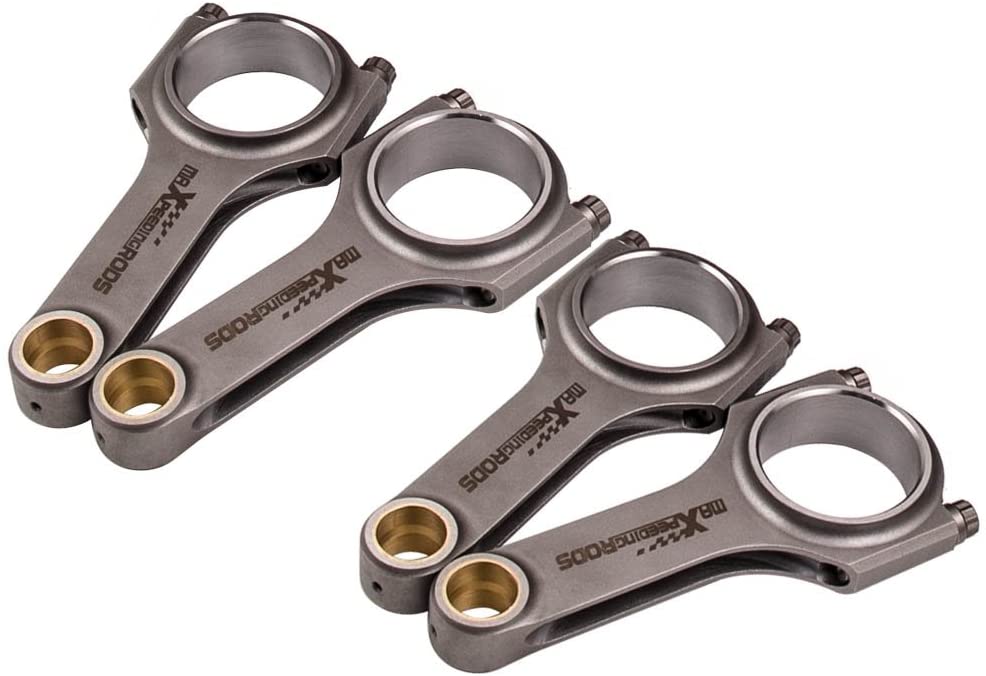
HOW DOES A CONNECTING ROD WORK?
A Connecting rod is used to transfer the reciprocating motion of the piston into the rotary motion of the crankshaft. As its name implies, it connects the piston to the crankshaft. Connecting rods have two ends – the Small End and the Big End. The small end is connected to the piston pin and the big end connected to the crank pins. The small end may have a solid or split eye (almost always solid in car engines) but the big end is always split (often solid in small motorcycle engines). The split shoulder end is assembled with a connecting rod cap and connecting rod bolts.
An oil hole is sometimes drilled through the shank to allow flow of lubricating oil from the big end to the small end. The oil comes to the big end through the crankshaft from the oil pump and goes to the piston pin and piston through the small end. The connecting rod in operation is subjected to combined axial and bending stresses. The combustion gas pressure and inertia forces produce axial stresses while bending stresses are produced due to centrifugal effects. To minimize these inertia loads a connecting rod should be both as strong and as light as possible.
HOW TO CHOOSE THE RIGHT CONNECTING RODS?
Connecting rods are placed under more stress than any other component in the engine. Selecting the strongest rod for a performance target is absolutely essential. As we all know, if a connecting rod fails, the engine can be turned to junk in a fraction of a second.
How to get the right con-rods for your engine? It’s not as simple as it sounds. What con-rods to choose is very important when building your engine. Con-rods play a huge part in your engine performance and longevity. And there are some factors you have to consider when choosing your con-rods. In most cases, you will be choosing between I-beam and H-beam rods.


I BEAM VS H BEAM
To understand why they are called H and I beam conrods you have to look at their cross-section. You have to look at the rod from above as if you were looking at it from the top of the cylinder bore. You then cut off the top half of the rod and you get the cross-section. The cross-section of the H beam is a capital letter H, while the cross-section of the I beam is a capital letter I. Now that we know why they’re called I beam and H beam let’s see which one is better. Which one should you chuck into your precious engine? Well, I’ll be honest with you. I-beam vs H-beam is a very controversial topic.
There was a popular opinion for some time that the H beam design is stronger and that the I beam design is lighter. Based on this the H beam design was supposedly better suited to the high combustion pressures associated with forced induction and the I beam was better suited for high revving naturally aspirated engines since it is lighter. This is a rule of thumb, at best. Honestly, it’s not even a rule of thumb because today we have so many exceptions to this rule that it simply doesn’t hold water anymore at all.
You also might hear that the I beam is better at handling normal, while the H beam is better at handling abnormal forces. If we grossly oversimplify this it means that the I beam is better at resisting being bent from the side while the H beam is better at resisting being bent at the face. Again, this a rule of thumb and provisions in the design are key to making the rod handle both normal and abnormal forces within an engine. If the rod is made from the right material and if the design incorporates that material in the right places both and I beam and H beam can be made to handle abnormal and normal forces equally well.
So which should you choose? If you’re a car enthusiast building an engine for the street, some track days or maybe some amateur racing. It doesn’t really matter at all. Either design will work well and you really shouldn’t focus that much on whether the rod is an H beam or an I beam, instead you should focus on the material the rod is made from and how it’s made.
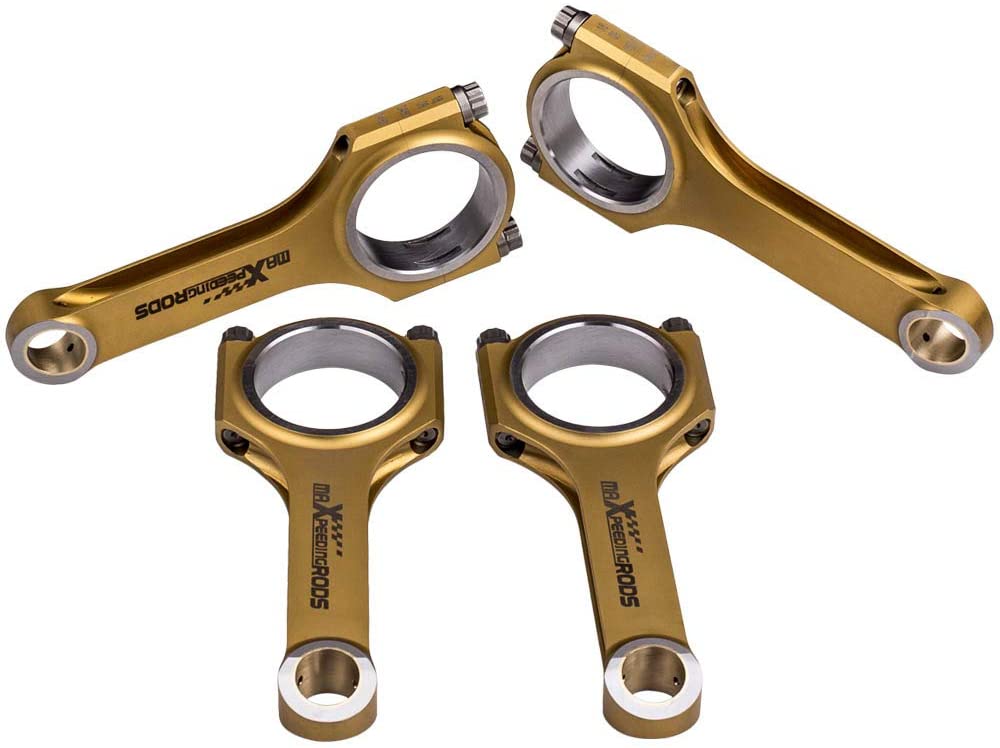
STEEL VS ALUMINUM CONNECTING RODS
When it comes to materials, most conrods are made from steel, but for drag racing applications aluminum rods are also a tempting choice. Steel rods are made in many different designs by many manufacturers and can be cast, forged or billet. Most aftermarket steel conrods are made from forged steel, and there are different styles of forged steel on the basis of the material grade, for highly modified competition applications, the majority of manufacturers, including us ( MaXpeedingRods ), use 4340 steel.
We know that aluminum is a much weaker material than steel. While high carbon steel typically has a tensile strength of around 200.00 psi, aluminum only manages around 95.000 psi. So why in heaven’s name would you put something that’s twice as weak inside an engine and expose it to all the extreme loads of engine operation? Because aluminum is a lot lighter than steel! And when it comes to performance engines light is right! The lighter the rotating assembly of your engine – the better!
Aluminum rods also have the ability to act as shock absorbers. Because they sort of give in a bit to the peak loads present in an engine, they help absorb these loads and transfer less of the stress onto your bearings and crankshaft. But there’s a price to be paid for all the benefits. Aluminum has a much shorter fatigue life compared to steel and engines with aluminum rods must be warmed slowly and fully before you can beat on them, and once you beat on them you have to let them cool of a bit. Something else you need to consider when installing aluminum rods into your engine is clearance. Sometimes they don’t clear stuff in your crankcase, like girdles or the bases of the cylinders, and you need to adapt these to suit the rods.
WHY BUY CONNECTING RODS AT MAXPEEDINGRODS?
All MaXpeedingRods conrods are precision hot forged and then CNC machined to ensure a perfect fit and finish.
All MaxPeedingRods conrods are made from 4340 steel and are multi-stage heat treated, surface treated as well as x-rayed and magnafluxed.
MaXpeedingRods offers a seamless online shopping experience and the streamlined e-commerce interface makes it easy for you to find the connecting rods you want.
MaXpeedingRods offers a variety of connecting rods in both Sport Performance and Street Performance.
Connecting Rods—Sport Performance
• Forged 4340 aerospace steel
• Unique titanium plating process
• Equipped with ARP L19 bolts
• Professional design and precision machining center assembly line manufacturing
• US SUNENEN honing machine professional honing
• 100% X-ray, ultrasonic, magnetic particle inspection
• Multi-stage heat treatment and professional shot peening to eliminate stress
• Single connecting rod can bear more than 250hp
• Pieces of single weight error of each set less than +/-0.5g
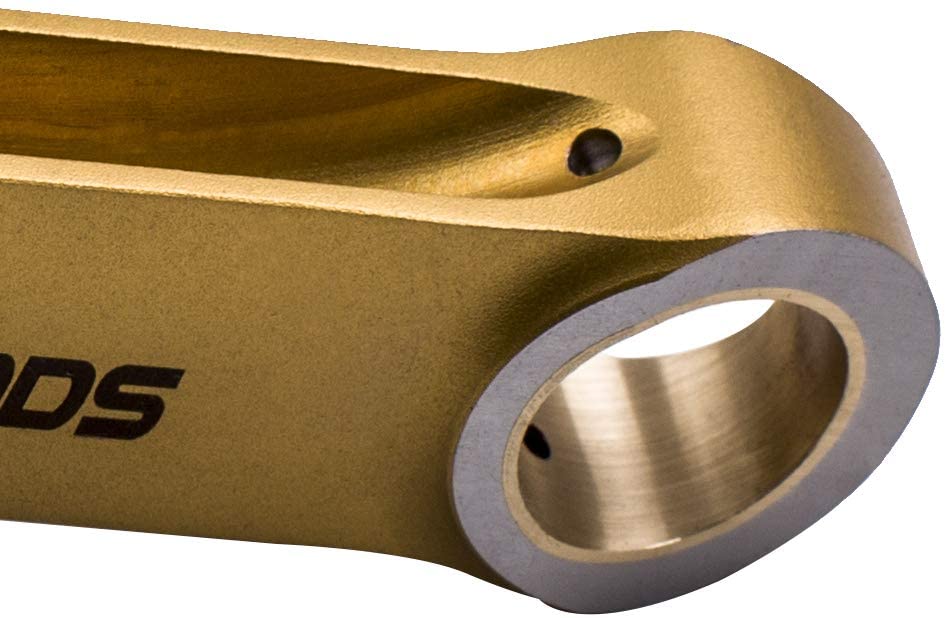
Connecting Rods—Street Performance
• Forged 4340 aerospace steel
• With Standard ARP 2000 bolts (Upgradable ARP L19 or ARP 625+ bolt )
• Professional design and precision machining center assembly line manufacturing
• US SUNENEN honing machine professional honing
• 100% X-ray, ultrasonic, magnetic particle inspection
• Multi-stage heat treatment and professional shot peening to eliminate stress
• Single connecting rod can bear more than 200hp
• Pieces of single weight error of each set less than +/-1g
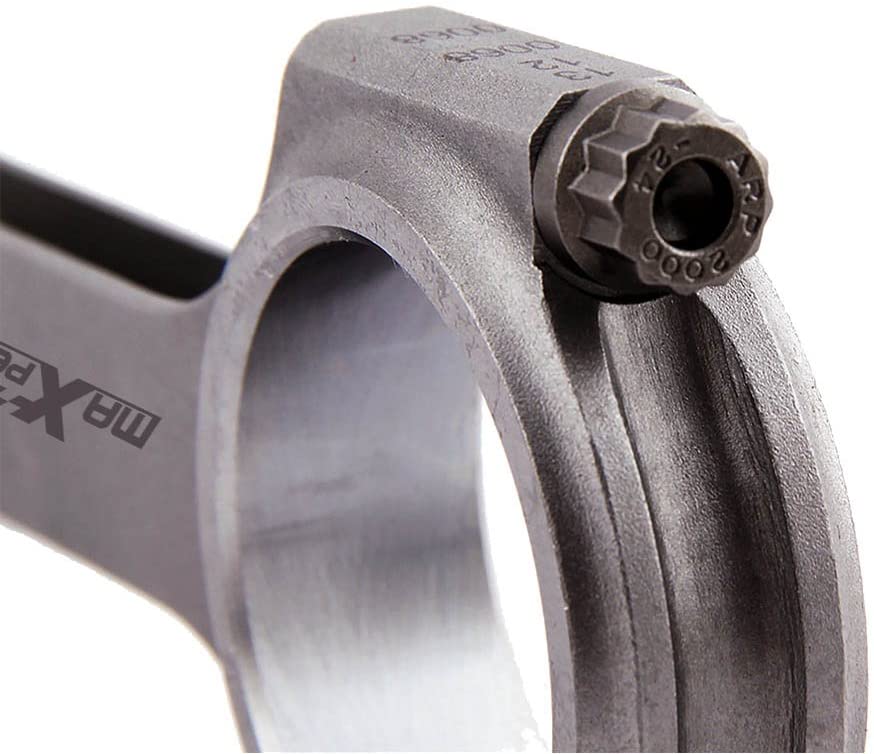
WHAT ARE THE SYMPTOMS OF A CONNECTING ROD FAILURE IN YOUR VEHICLE?
A connecting rod needs to be strong and durable for the engine to survive. If it’s too weak to handle the load of the combustion, then all the pressure will wear it down and bend it out of shape.
As for the driver, they will be able to notice when this occurs because there will be some very noticeable symptoms present. Below are the top 4 symptoms of connecting rod failure.
- Low Engine Oil
If you have a bad or failing connecting rod, then it may cause your engine to consume too much oil. Because of this, you may find that your engine always has a low level of oil. Either that or your existing oil will need to be changed more often than usual. - Engine Knocking Sounds
When your engine is turned on and running, you may hear a knocking sound coming from it. This will be a repeated knocking sound that gets faster as your engine speed increases. The sounds may go away after a short while, once your oil has a chance to circulate through the engine components and lubricate them. - Reduced Oil Pressure
A bad connecting rod could have devastating effects on your engine’s oil pressure. There may be an oil pressure gauge on your engine which will tell you when it has low oil pressure. You could have a warning light on your dashboard that will tell you as well. If you have low oil pressure, then it means the oil cannot circulate properly through the engine. This might lead to an overheated engine if the problem is not resolved quickly. - Bent or Damaged Rod
If you suspect that you have a bent or damaged connecting rod, based on the other symptoms which may be present, then you need to visually inspect the rod yourself to see what its condition is. This would require your engine to be disassembled, which is a job that only a mechanic should do.
HOW TO INSTALL CONNECTING RODS IN A CAR?
- All conrods must be completely cleaned with a suitable cleaner and dry with compressed air before loosening the fasteners and removing the caps.
- There are laser-etched numbers on each rod’s big end side, so you can reassemble the correct cap to match the rod body easily and accurately. Do not swap any conrods and caps.
- Disassemble the conrods, carefully clean all areas and hardware mating surfaces.
- To ensure proper installation, the rod bearing clearance should be controlled according to your application manual and checked accurately by dial bore gauge(Plastigage is not recommended), the clearance is different for each engine application.
- Gently tap the conrod cap with a wood or rubber hammer until it’s fully seated. Don’t use any metal or hard object to tap the cap.
- Use the proper fastener lube before torquing down the bolts. ARP fastener lube is highly recommended.
- Torque down the caps to the correct torque by referring to the ARP fastener torque table. Overtorquing may damage the conrods or even the engine.
